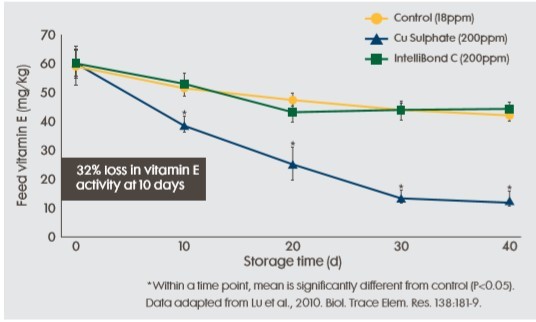Optimal Colostrum Quality and Quantity - It Comes From the Mother!
- 5 Nov 2020
- 0 Comments

Colostrum is a concentrated source of nutrients, which includes fats, proteins, Immunoglobulins such as Immunoglobulin G (IgG), carbohydrates, vitamins and minerals. Ensuring that a newborn calf gets the correct amount of good quality colostrum as soon as possible after birth is paramount to produce a healthy calf.
Measuring colostrum quality
The use of a colostrometer or refractometer to measure the amount of immunoglobulins within the colostrum is essential to make sure that the calf receives enough passive immunity from its mother.
In some cases, very high yielding fresh cows producing a lot of milk produce less quality colostrum, however, if everything is done environmentally and nutritionally to prepare for this, it shouldn’t be the case. There are lots of things we can do to ensure high quality and high quantity of colostrum is produced from every cow all year round.
‘High-Quality Colostrum’ can be defined as having at least 50 g/L IgG. This should ideally be farm-specific in regard to the diseases that calves are likely to be exposed to. It should also be clean with a low bacterial count and free from any pathogens that can be transferred within it.
Colostrum production
The process of colostrum production in the udder begins several weeks before calving and stops abruptly when the calf is born. During this time, large amounts of IgG and other immune factors are selectively transferred from the bloodstream of the cow into colostrum. This starts approximately five weeks prior to calving and is maximised in the last two weeks before calving (Maunsell, 2014) when a cow is in the close-up dry cow group. So, the way that the dry cow is managed can greatly impact the quality of colostrum produced. When thinking about the environmental impact the dry period has on colostrum, stress is one of the biggest factors. Stocking rate, feed availability, temperature, group changes, all have an impact on oxidative stress in the cow, which impacts immunity and possibly the quality of colostrum produced.
"The process of colostrum production in the udder begins several weeks before calving and stops abruptly when the calf is born"
Selenium and vitamin E are involved in immune function and may influence colostrum quality when they are deficient. Cows fed a prepartum diet deficient in selenium and vitamin E produce less colostrum and lower total mass of colostral IgG than cows fed the same diet but supplemented with injections of vitamin E and selenium (Lacetera et al., 1996). It is important to supply adequate vitamins and minerals in the dry period, either through bolus, buckets, or tmr minerals, and consider if your cows get enough year-round: speak to your Wynnstay Dairy Specialist regarding a review of your dry cow approach. Wynnstay’s Premier Dry Cow minerals contain optimum levels of vitamins and minerals, and contain IntelliBond® Copper which have been shown to have less impact on vitamin E activity over time than traditional sulphates, so more being available to the cow in times of need (Figure 1).


Figure 1: Vitamin E loss in feed following the addition of inorganic copper sulphate versus IntelliBond C in comparison to no additional copper.
"It is important to supply adequate vitamins and minerals in the dry period, either through bolus, buckets, or tmr minerals."
Finally, another consideration for feeding the transition cow would be protein level. Inadequate metabolizable protein in the transition cow diet 3-4 weeks pre-calving may have an eff ect on the quantity of good colostrum produced. Make sure there are adequate levels, aiming for >1,200g MP in the close-up cow diet.
In conclusion, a few key points that should be taken into consideration:
- Transfer of antibodies (especially IgG) from the blood of the cow into colostrum starts about five weeks prior to calving: if colostrum is poor, look back at what happened in that cow’s dry period.
- The older the cow, the better the colostrum – but there’s lots of individual variation! On average, first-calf heifer colostrum is lower in volume and IgG concentration than that from older cows. However, many heifers produce very good quality colostrum. Don’t automatically discard heifer colostrum!
- Colostrum should be tested and only discarded if it is: low quality, bloody, from sick cows, from cows with clinical mastitis, or from cows that are known to be infected with chronic diseases such as Johne’s disease or Mycoplasma.
- Environmental stressors, such as heat stress, may reduce the quality of colostrum, especially in heifers.
- Dry period length should be at least 3-4 weeks to maximize colostrum quality with adequate vitamins, minerals and protein level in the diet.










